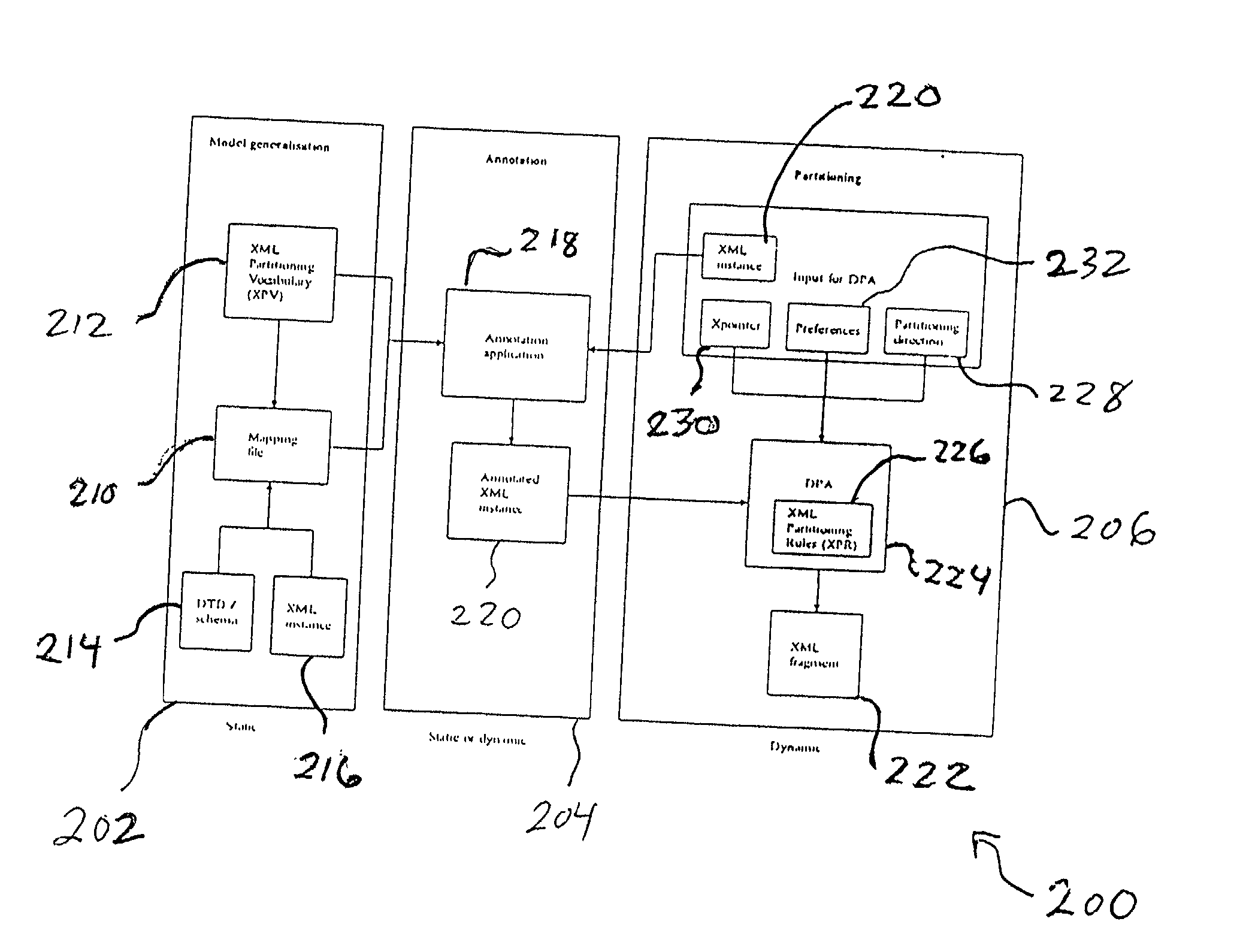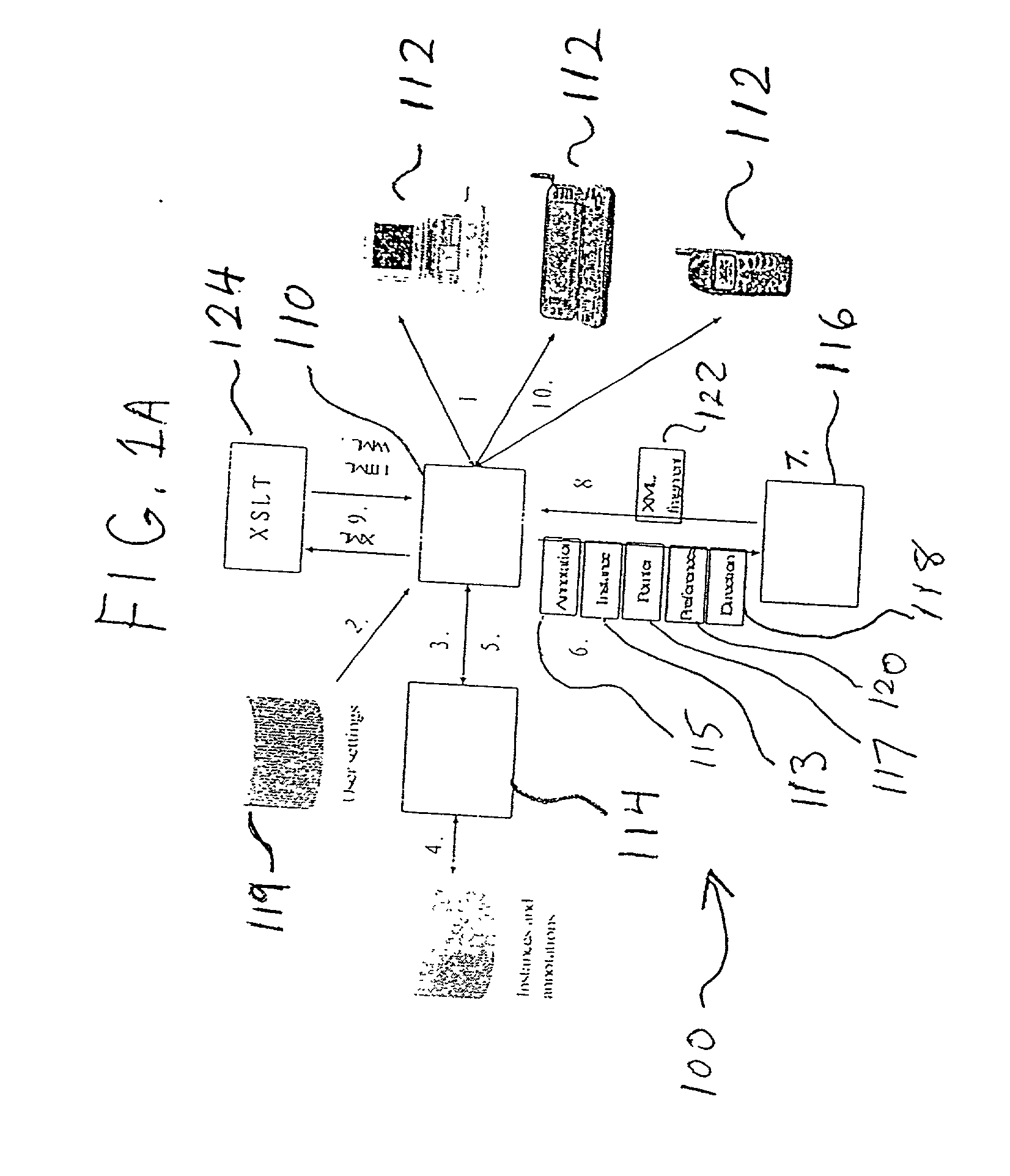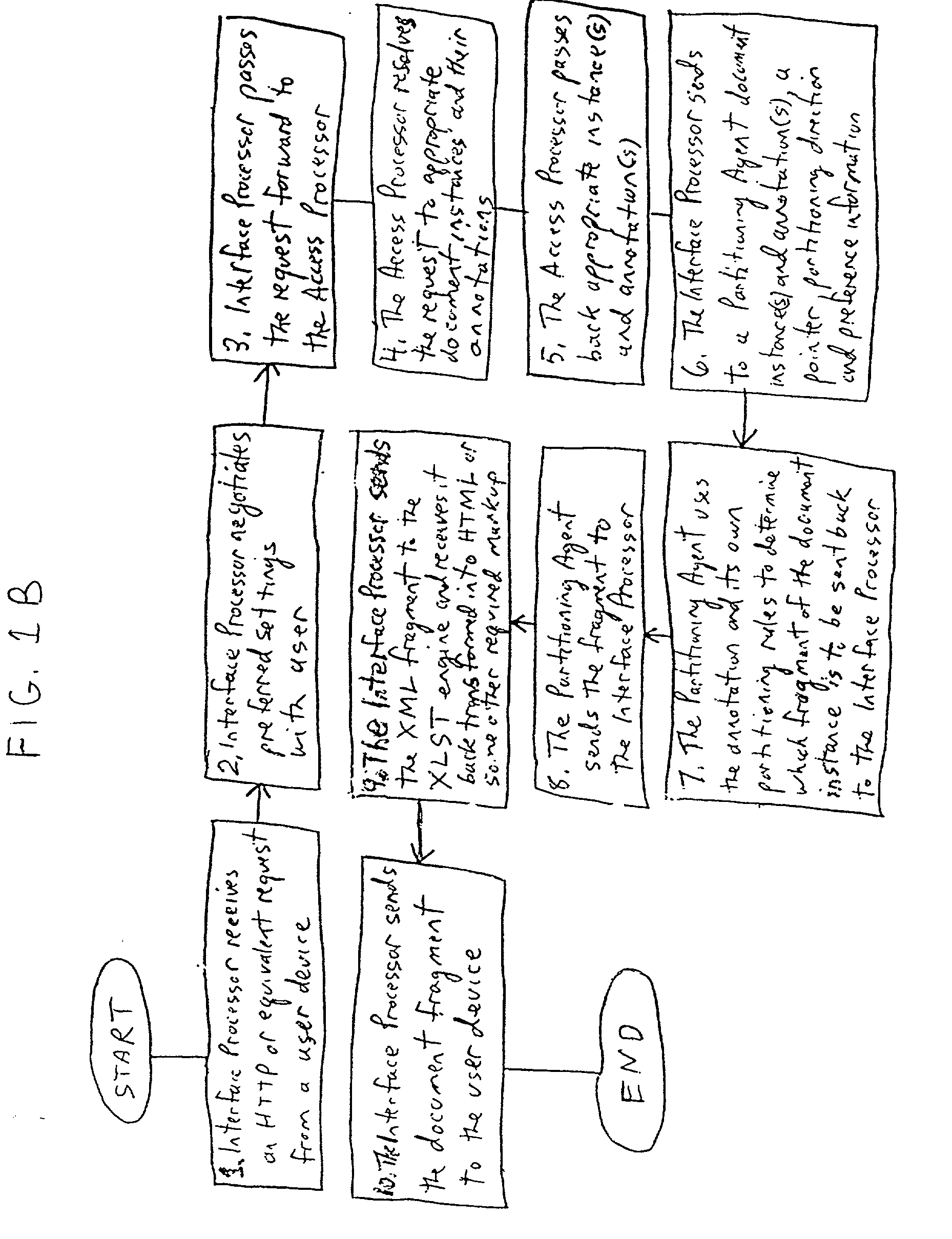Apparatus and method for dynamic partitioning of structured documents
- Summary
- Abstract
- Description
- Claims
- Application Information
AI Technical Summary
Problems solved by technology
Method used
Image
Examples
Embodiment Construction
[0036] Information desired for retrieval by a mobile terminal (e.g., a PDA, mobile phone, laptop) is often found in a structured document, which is a document that includes symbols defining its structure. An example of a format for a structured document is Hypertext Markup Language (HTML), which is widely used in Internet applications; another example is Extensible Markup Language (XML). Both these languages identify data using bracketed or delimiting tags. While HTML tags indicate how to display the bracketed data, XML indicates what the bracketed data means. Under XML rules for creating a well-formed document, a pair of brackets cannot overlap another pair. That is, one pair of brackets can only intersect another pair if one or the other of the pairs is nested within the other. This nesting implies a hierarchical relation among elements. An element's brackets or delimiting tags serve as labels that semantically characterize the element. In effect, the labeled elements are arranged...
PUM
 Login to View More
Login to View More Abstract
Description
Claims
Application Information
 Login to View More
Login to View More - Generate Ideas
- Intellectual Property
- Life Sciences
- Materials
- Tech Scout
- Unparalleled Data Quality
- Higher Quality Content
- 60% Fewer Hallucinations
Browse by: Latest US Patents, China's latest patents, Technical Efficacy Thesaurus, Application Domain, Technology Topic, Popular Technical Reports.
© 2025 PatSnap. All rights reserved.Legal|Privacy policy|Modern Slavery Act Transparency Statement|Sitemap|About US| Contact US: help@patsnap.com



